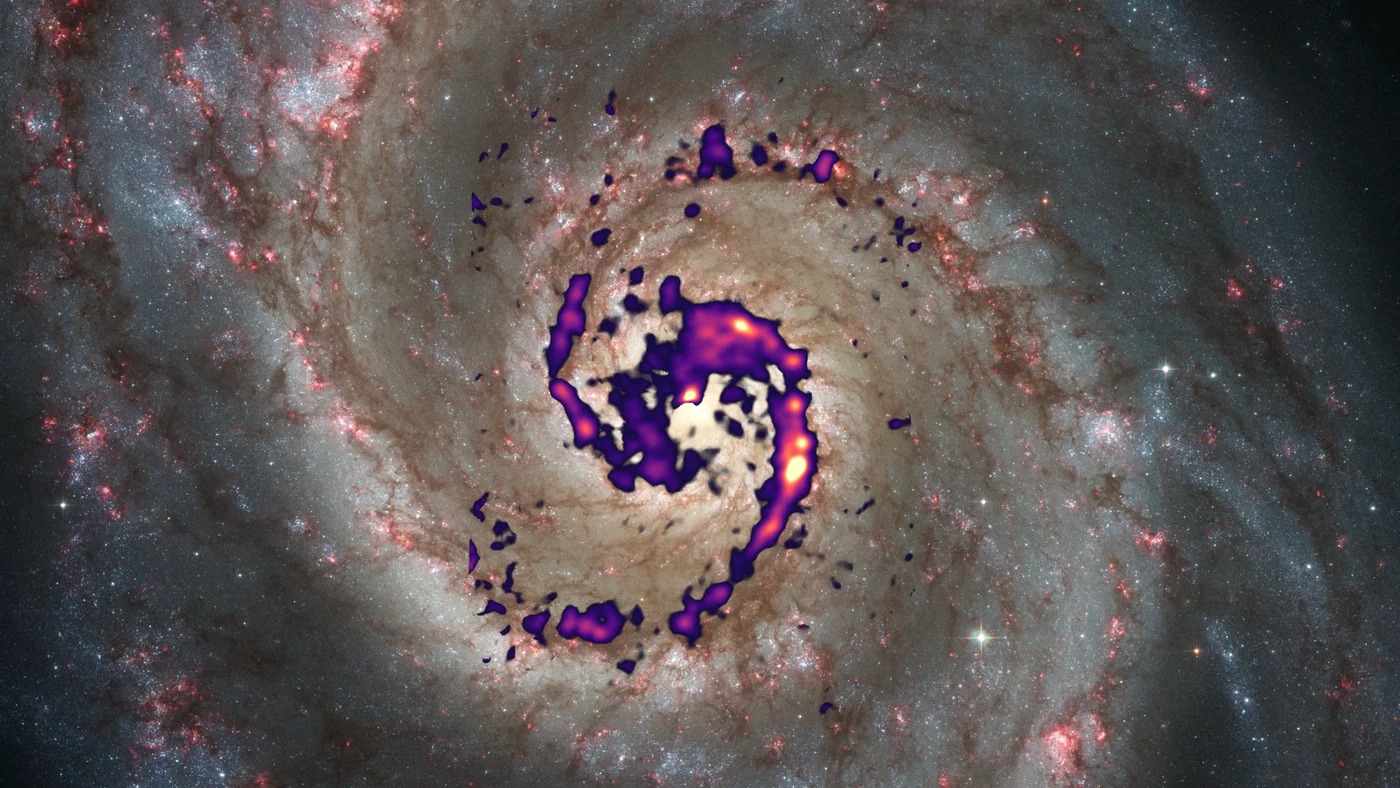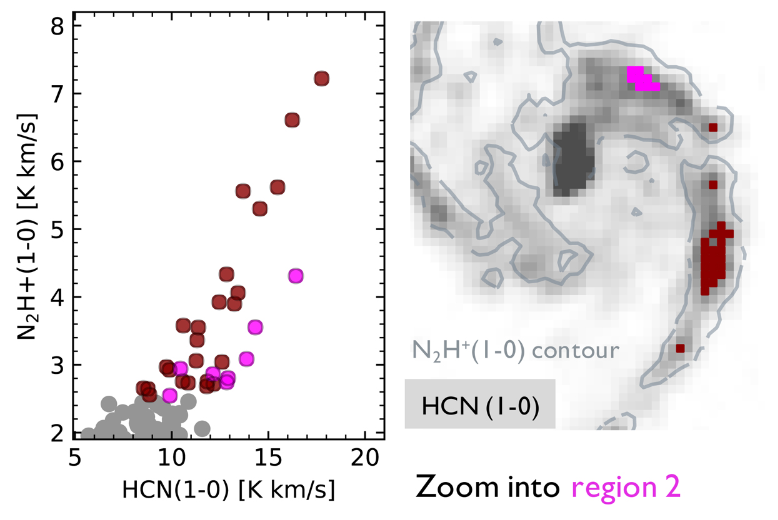In an effort to uncover the secrets of outer space, scientists are focusing their attention on one of the most attractive and well-known galaxies, the Whirlpool Galaxy (M51). Their research is aimed at identifying areas where new stars are forming over time. By mapping the presence of certain chemicals in detail, the scientists hope to gain information about the conditions necessary for the birth of new worlds.

The researchers mapped the areas of cold gas in the Whirlpool Galaxy, placing them as key points where this gas gradually condenses. As a result, nodes are formed, which become sources for the birth of new stars. Gravity attracts more dust and gas to these nodes until they reach a sufficient density, turning into a hot core called a protostar.
Scientists typically analyze molecules such as hydrocyanic acid and diazenylium to understand star formation processes in our galaxy. But looking for these chemicals in other galaxies could expand our understanding of these processes.
“Only now have we been able to measure these signatures in great detail over an extensive range within a galaxy outside the Milky Way, covering various zones with diverse conditions. Even at first glance, it’s evident that while the two molecules effectively reveal dense gas, they also disclose interesting differences,” says Eva Schinnerer, research team leader at the Max Planck Institute for Astronomy.

The image shows regions of diazenylium in the Whirlpool Galaxy that differ from the areas where hydrocyanic acid is found, especially in the center of the galaxy. This may be explained by the fact that these two gases emit light at different rates, for example, when they are heated while orbiting a supermassive black hole at the heart of the galaxy.
The researchers believe that diazenylium can serve as a more reliable indicator of density in this context, although its weak signal makes it difficult to observe. This creates challenges for its use in the study of less bright galaxies, compared to the Whirlpool Galaxy.
“Although we can learn a lot from the detailed observation program with the Whirlpool Galaxy, it is, in a sense, a pilot project. We would love to explore more galaxies in this way in the future,” Sofia Stuber commented, the lead author of the study from the Max Planck Institute for Astronomy.
Based on the materials of Astronomy & Astrophysics and mpia.de

